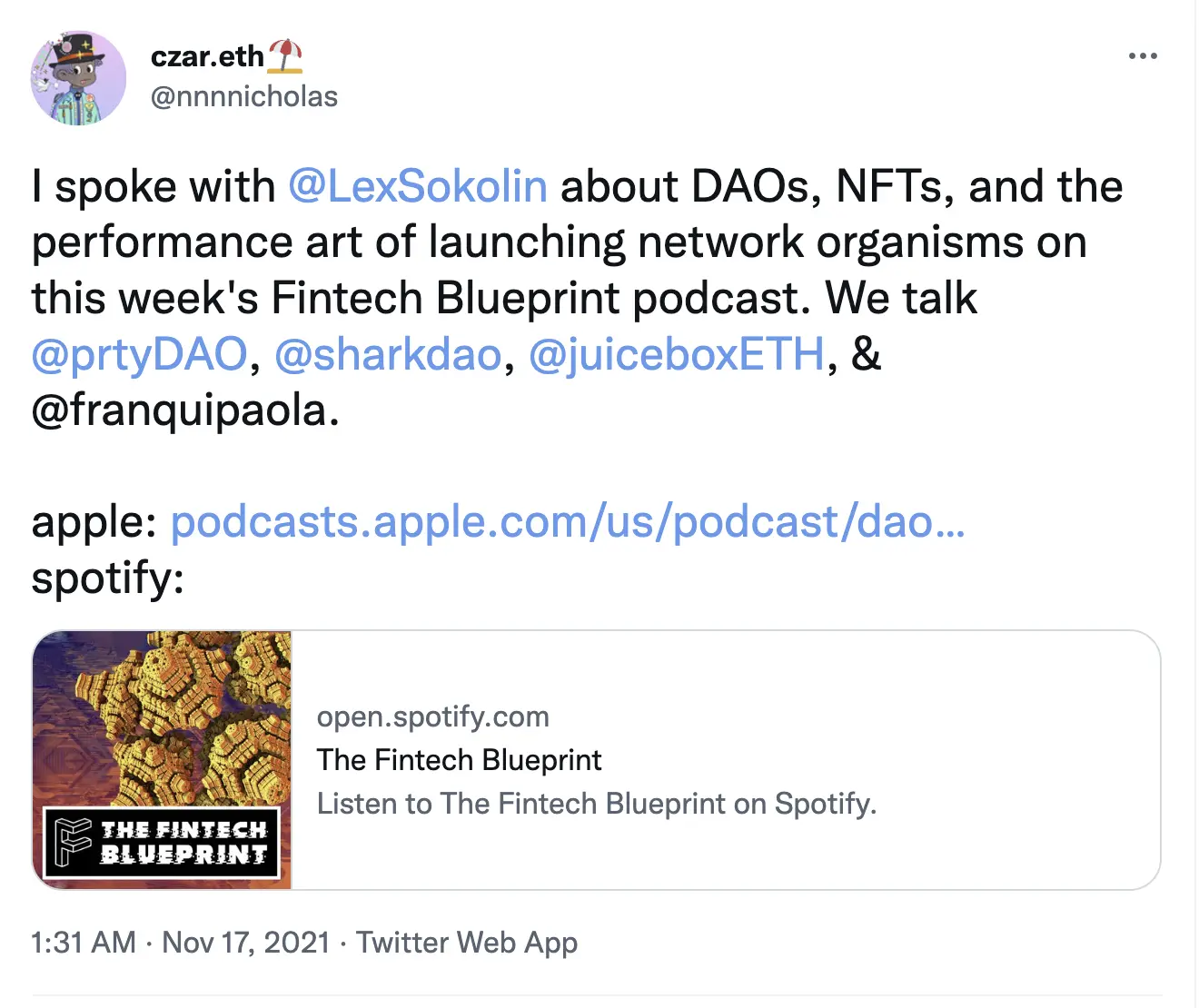Juicebox Benefits Program Explained
You can claim your JBX here! For more information, read on.
Background
Juicebox's legitimacy as a DAO is built upon sufficient decentralization of power, access, and ownership. To accomplish this ideal, Juicebox must attract and retain an active community that has Juicebox's long-term interests in mind.
One of the most direct methods for improving decentralization is the airdrop. Several airdrop proposals were made to this effect in FC#15, all of which were rejected.
JBP-103 - Distribute JBX to JBX Holders
JBP-102 - Distribute JBX to Juicebox Projects
JBP-101 - Distribute JBX to v1.1 Party Attendees
JBP-100 - Distribute JBX to Nicholas’ List
JBP-99 - Distribute JBX to Extended Community
As part of a new airdrop proposal, ARCx has crafted a Juicebox Benefits Score which identifies Juicebox community members based on their token holding behaviour and governance participation.
See JBP-114: Juicebox Benefits Airdrop
Score Methodology
The Juicebox Benefits Program identifies and rewards active community members who hold Juicebox DAO’s long-term interests at heart. The score rewards active contributors by measuring governance participation, and rewards long-term support by measuring how long a wallet has held JBX.
Governance Factor (60%)
The Governance Factor measures the number of Juicebox Snapshot proposals that a wallet has voted in. The wallet with the highest Governance score is given 600 points, and the wallet with the lowest score is given zero. All other wallets are linearly scored within those bounds—for example, a wallet that voted in half as many snapshot proposals would be given 300 points.
HODL Factor (40%)
The HODL Factor measures the number of UTC dates that a wallet has held at least 1 JBX (either claimed or unclaimed). The wallet with the highest HODL score is given 400 points, and the wallet with the lowest score is given zero. All other wallets are linearly scored within those bounds—for example, a wallet that held JBX for half as many dates would be given 200 points.
How to Claim
Visit airdrop.juicebox.money and connect your wallet to see if you are eligible. You can also claim a free passport to view this score (and other scores) on arcx.money.
On 2022-06-07 at 22:00 UTC, any unclaimed JBX which remains in the smart contract will be returned to the multisig for future use.
Your score on arcx.money might not be the same as your score on airdrop.juicebox.money. To prevent sybil attacks, the airdrop scores were measured at Ethereum block 14,263,369.
What's Next?
Going forward, the community could use the Juicebox Benefits score to make new airdrops, to set up a gated Merch Squad collection, to make gated Discord roles, or even to create exclusive Juicebox-themed ARCx passport skins. These scores are verifiable onchain, meaning they can be permissionlessly used in smart contracts or used through an API.
Some other examples mentioned by ARCx include:
- Distributing airdrops equitably
- Boosting smart contract staking yields
- Verifying social status via Discord roles
- Offering free smart contract insurance to the best users
- Fee & product discounts
- Many more
This score evolves with your behaviour over time! Although the methodology could evolve, Juicebox Benefits projects aim to reward active contributors which support Juicebox's long-term goals. Your participation and support of Juicebox will be reflected in these scores over time.
If you have ideas or suggestions, share them in the ARCx Discord or in #jbx-benefits on the Juicebox Discord.
Verify
Airdrop contract: 0x518e3CdBcda4f0735399c9F1e03A7aBC7562632f Merkle root: 0xba0ccda021dd3008d51728ccd530dfe42d6bba07f8118d8a796e26d80e305009 Sweeper: 0xAF28bcB48C40dBC86f52D459A6562F658fc94B1e
Merkle Root(use yarn && yarn generate-list to verify).
arcx.money|ARCx Twitter|ARCx Discord|juicebox.money|Juicebox Twitter|Juicebox Discord
